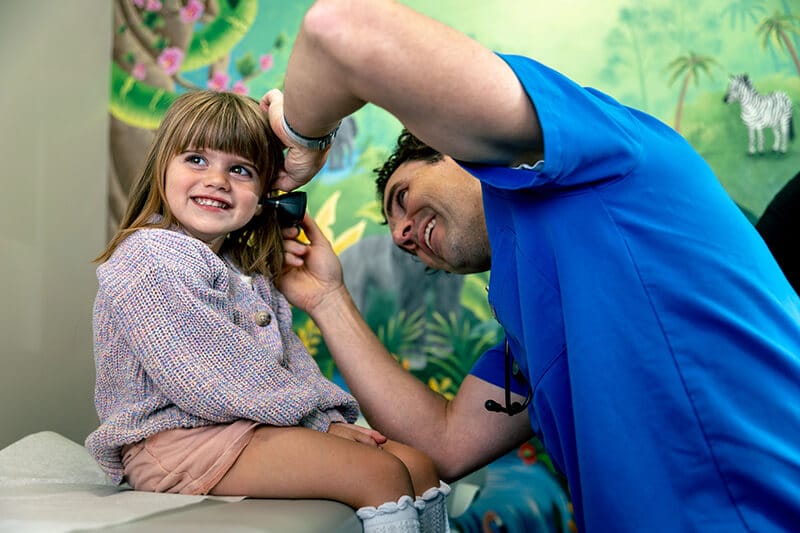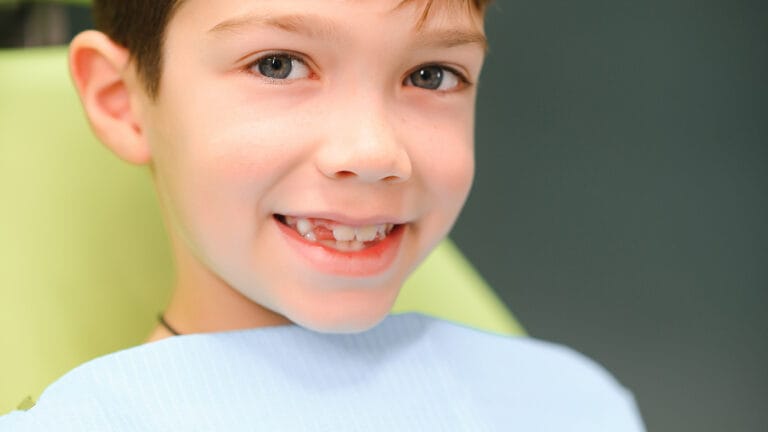Tooth decay is the most chronic disease among children. The effects of dental decay on children are far-reaching. Oral health problems can lead to many issues such as chronic pain, social issues, difficulty eating, difficulty speaking, diminished self-esteem, and learning problems in the classroom. In fact, tooth decay in children is one of the leading causes of school absenteeism accounting for up to 51 million school hours lost each year. Although tooth decay in the population has declined over the years, tooth decay in young children remains constant.
Oral health can affect a child’s overall health and well-being and goes beyond just the teeth and gums. Poor oral hygiene and untreated dental issues can lead to pain and discomfort, changes in eating habits, concentration at school, and more. When your child has an issue with their mouth, you may not know whether you should call their pediatrician or dentist, especially if they’ve been injured. Our integrated approach to children’s health means your dentist can consult your pediatrician and vice versa so your child is getting the best comprehensive care.
Why is childhood tooth decay so prevalent?
Tooth decay requires the perfect storm to develop. Four factors need to be involved for the decay process to start. These four key ingredients are teeth, bacteria, sugar, and time.
Bacteria in the mouth change the carbohydrates and sugars found in foods and drinks into an acid which starts to weaken and demineralize the teeth. Each time we eat and drink, the acid produced by the bacteria from the carbohydrate or sugar can attack the teeth for 20 minutes or longer. Over time a cavity can form on the tooth.
Once there is an understanding of the decay process, you can see how certain things such as dietary behaviors and oral hygiene can affect the decay process. One of the behaviors associated with tooth decay is the consumption of frequent sugar-sweetened beverages. The keyword here is frequent. The more exposure (time) the teeth have to the sugary liquid, the more detrimental it is to the teeth. Consider a sippy cup with 6 ounces of juice that the child drinks 30 times throughout the day versus a glass of juice that the child drinks at mealtime. Which is more detrimental to the child’s teeth? Hopefully, you can see that the sippy cup exposes the teeth potentially 30 more times to sugar than the glass does at mealtime. It is the same principle with a bottle of milk that the child takes to bed with them. There is essentially a film of sugar that gets converted to acid that sits on the child’s teeth throughout the night and doesn’t get cleaned off until the teeth are brushed.
Brushing a child’s teeth with fluoridated toothpaste reduces the amount of bacteria in the mouth. This eliminates the bacterial plaque layer covering the teeth and reduces the acid levels in the mouth to help stop the demineralization process.
How can we help prevent tooth decay in our children?
It’s said an ounce of prevention is worth a pound of cure. So, what can be done to help prevent this chronic disease in young children? Here are a few helpful recommendations to help prevent early childhood decay.
- Establish a dentist for your child by 12 months of age. With our crosscare model, our in-house dentists make it so you can schedule a well-child check and dental checkups back-to-back without having to find a separate office. This allows your child to get comprehensive, preventative, and routine dental health care thereby improving oral health knowledge and practices and decreasing the risk of childhood decay.
- Modify your child’s diet to avoid frequent consumption of sugary foods and liquids.
- Apply professionally-applied fluoride varnish treatments for those children at risk. Our offices now offer fluoride treatments at your child’s wellness exam. This simple application is an excellent way to ensure your child’s oral health is taken care of from an early age. Most medical insurance pay for this service.
- Assist in brushing your child’s teeth. Children need help brushing until they can sufficiently tie their own shoelaces which is usually around the age 7 or 8.
- Brush your child’s teeth with fluoridated toothpaste twice daily starting as soon as the teeth erupt. Children under the age of three need just a smear or rice size amount should be used. In children age three to six, a pea-sized amount of fluoridated toothpaste should be used.
Childhood decay is a serious issue that affects a great number of children in the world. The beauty of all of this is that it is preventable! To some, it may take a little effort to change behaviors and habits of caregivers and children alike, after reading these recommendations. Don’t get overwhelmed, introduce change a little at a time step by step. As you do this, I am confident you will see the benefit of improved oral health. Establishing good dental habits early in life can put your child on the road to a lifetime of good oral health! Our integrated care approach streamlines getting your child the medical and dental care your child needs. We’ve got your back on this one.






